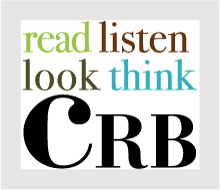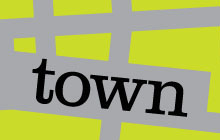By Courtney J. Martin, curator in residence,
June 2014
June 2014
Last June, curator and art historian Courtney J. Martin participated in a short residency at Alice Yard. The notes below, reflecting on Alice Yard’s physical and conceptual space, were written following her visit.
In the extended, multi-part conversation with (some subset of) Christopher Cozier, Nicholas Laughlin, and Sean Leonard that defined my recent visit to Alice Yard, I began to think seriously about what the “yard” as a spatial denomination might mean for art practice. Physically, the yard that forms Alice Yard is a concrete area at the rear end of the house that contains both the residency accommodation and a commercial business (currently a natural grocery and café). The yard connects the house with the other spaces in the complex: a music rehearsal studio, a white cube gallery (the “Box”), a platform stage, a raised terrace, and an additional multi-purpose room (the “Annex”). The yard is the thing that one must pass through, wait in, gather around, or peer into in order to make contact with the larger entity of Alice Yard as a cultural space. To parse out the issue of the yard, is not, however, a way of making something out of nothing. I was struck by the use of the word in Port of Spain as both a description of actual space as well as a conceptual ideal. For example, one might step into one’s own yard on a daily basis, but dare let someone else trespass onto that same yard in word, action, or deed, and it becomes another matter altogether, even if no physical breach is made.
Sean Leonard described the yard as a “laboratory” within public space. And I can see where that kind of idea takes shape, as the yard is one of the main components of forming and maintaining a mas band. But this yard, Alice Yard, has a specific function as the ground on which most of the cultural production at the residency occurs. Artists develop, practice, draw, build, and show within the confines of that space, making every single gesture in it a public one; open for engagement and debate. Few other art constructs realise that kind of democratic ideal. Unfortunately, democracy is an overused word, one that has taken on a kind of pathology of reverence within the art world. The yard is a construction, the unused excess of the built environment met by the re-construction of the natural world. Interiority and ecology meet in the yard, as do order and disorder. One need only look to the millions of hours wasted across the southeastern United States in attempts to abate the kudzu from turning a well-manicured lawn into an overgrown yard. The ubiquity of the term, yard, was striking for me, as its use seemed to hold none of the same class or aesthetic connotations with which I was familiar. For me, this new yard, neither something to admonish, fix, or move away from, was liberating and curious.
That Alice Yard’s actual yard area extends from and into the white box gallery reflects the symbiotic nature of the two. Ideas revealed in the gallery were often conceived in the yard. This is true at Alice Yard, but it also a truism of white cube production generally. The ways in which we exhibit contemporary art as detached from a source within sterilised, often geometric, spaces works to deny the process by which that art got there.
I am not against the white cube. I like order, and it is a standard, a unit of qualitative art architecture. When Brian O’Doherty/Patrick Ireland problematised the white cube nearly forty years ago, he did so with the full understanding of how the stickiness of modernism led to the clinical chamber. The white cube has been not only a standard of exhibition practices, but also a way to equalise objects. Presumably every object (regardless of media, material, method, or maker) is the same if it finds its way into the white cube. The democracy of our current art world with its fairs, commercial galleries, and biennales, however, shows us that not all white cubes are created equal. To borrow Christopher Cozier’s term, the white cube does nothing if not reflect and refract the “pigmentocracy” of exhibition practices. Even within the neutral space of the squared-off white walls, we as cultural workers have produced (manufactured) variances and difference to distinguish the good from the bad, quality from quantity.
If the white cube is supposed to give us a level playing ground, what might the yard do to complicate its stated equanimity? I am not sure, but I am certain that there is some value in knowing what came before the object. Theoretically, the yard is unlike the “studio”, but it is not dissimilar from the “archive” as a repository of engagement. Like assemblage’s relationship to the street or Florentine sculpture’s direct route to the quarry, the material-conceptual space of an object is important. The yard holds that kind of significance. I am not the first to come to Alice Yard and be struck by the physical space and its generative possibilities, and I certainly will not be the last.
Sean Leonard described the yard as a “laboratory” within public space. And I can see where that kind of idea takes shape, as the yard is one of the main components of forming and maintaining a mas band. But this yard, Alice Yard, has a specific function as the ground on which most of the cultural production at the residency occurs. Artists develop, practice, draw, build, and show within the confines of that space, making every single gesture in it a public one; open for engagement and debate. Few other art constructs realise that kind of democratic ideal. Unfortunately, democracy is an overused word, one that has taken on a kind of pathology of reverence within the art world. The yard is a construction, the unused excess of the built environment met by the re-construction of the natural world. Interiority and ecology meet in the yard, as do order and disorder. One need only look to the millions of hours wasted across the southeastern United States in attempts to abate the kudzu from turning a well-manicured lawn into an overgrown yard. The ubiquity of the term, yard, was striking for me, as its use seemed to hold none of the same class or aesthetic connotations with which I was familiar. For me, this new yard, neither something to admonish, fix, or move away from, was liberating and curious.
That Alice Yard’s actual yard area extends from and into the white box gallery reflects the symbiotic nature of the two. Ideas revealed in the gallery were often conceived in the yard. This is true at Alice Yard, but it also a truism of white cube production generally. The ways in which we exhibit contemporary art as detached from a source within sterilised, often geometric, spaces works to deny the process by which that art got there.
I am not against the white cube. I like order, and it is a standard, a unit of qualitative art architecture. When Brian O’Doherty/Patrick Ireland problematised the white cube nearly forty years ago, he did so with the full understanding of how the stickiness of modernism led to the clinical chamber. The white cube has been not only a standard of exhibition practices, but also a way to equalise objects. Presumably every object (regardless of media, material, method, or maker) is the same if it finds its way into the white cube. The democracy of our current art world with its fairs, commercial galleries, and biennales, however, shows us that not all white cubes are created equal. To borrow Christopher Cozier’s term, the white cube does nothing if not reflect and refract the “pigmentocracy” of exhibition practices. Even within the neutral space of the squared-off white walls, we as cultural workers have produced (manufactured) variances and difference to distinguish the good from the bad, quality from quantity.
If the white cube is supposed to give us a level playing ground, what might the yard do to complicate its stated equanimity? I am not sure, but I am certain that there is some value in knowing what came before the object. Theoretically, the yard is unlike the “studio”, but it is not dissimilar from the “archive” as a repository of engagement. Like assemblage’s relationship to the street or Florentine sculpture’s direct route to the quarry, the material-conceptual space of an object is important. The yard holds that kind of significance. I am not the first to come to Alice Yard and be struck by the physical space and its generative possibilities, and I certainly will not be the last.








No comments:
Post a Comment